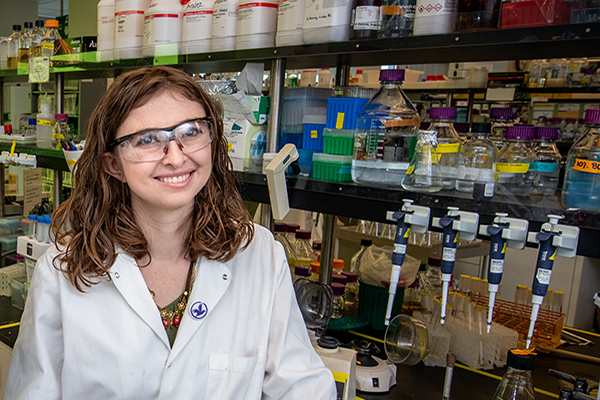
Cody Finke, CEO & Co-Founder, Brimstone Energy
Cody holds a BA with distinction in chemistry from Carleton College and a PhD in environmental science and engineering from Caltech where he worked with Prof. Michael Hoffmann. Cody has worked variously on energy storage, wastewater treatment, and industrial processes. He is the CEO and Co-Founder of Brimstone Energy. In his free time, Cody likes outdoor activities.

Hugo Leandri, CTO & Co-Founder, Brimstone Energy
Hugo holds a BS and MSc in industrial engineering from ICAM in France. Hugo finished his master's degree at Caltech where he worked on electrochemical wastewater treatment for Prof. Michael Hoffmann. He is the CTO and Co-Founder of Brimstone Energy. In his free time he likes to surf.
Brimstone Energy is a hardware cleantech startup in Berkeley, California that strives to reduce global carbon dioxide emissions with innovative technological solutions. Co-founded in 2019 at Caltech, by Cody Finke and Hugo Leandri, Brimstone is specifically working to eliminate non-energy process CO2 emissions from various industrial processes like hydrogen or cement.
Unlike emissions from energy production, process emissions are a direct result of chemical reactions and are responsible for around 10 percent of global greenhouse gas emissions, approximately the same as the emissions from burning natural gas. The non-energy process emissions from hydrogen and cement are difficult to decarbonize, because even if clean energy were to be used to make these products, these emissions would persist. One of the applications of the company's technology is to provide a cost-effective process for converting mine tailings into cement.
Still privately held by Finke and Leandri (named to the Forbes 30 Under 30 List), Brimstone has received grants from the California Rocket Fund, Caltech, ARPA-E, SoCal Gas, PG&E, and the World Materials Forum. Brimstone has participated in the Creative Destruction Labs’ Energy Accelerator Program, and CEO Cody Finke is an Activate Fellow.
The company also recently joined the Chevron Technology Ventures (CTV) Catalyst Program, which accelerates the maturation of early-stage companies that have technology beneficial to the energy industry.
Cody, why is reducing process emissions so important to you personally?
I won the global lottery at birth because I was born into a family who could pay for a great education, my skin color has protected me from racism and oppression, and I am a citizen of a country with great universities and minimal pollution. I feel that I need to pay the world back for this great luck by trying to work on solving problems that can make the world more equitable and humane. Working to mitigate the problems of climate change fits that bill. About process emissions specifically, in the cleantech world, it seems like everyone and their cat is working on clean energy, but nobody is working on industrial process emissions like cement, steel, aluminum or industrial hydrogen.
I like process emissions because they are orphaned and therefore there are a lot of opportunities for innovation. Also, process emissions are a huge problem; the four processes that I just mentioned are responsible for 16% of global GHG emissions, which is more than all the emissions from transportation! But also, I am a chemist and process emissions are produced as a direct result of the chemical reactions of making things, and it is fun to think about new chemistry.
And, Cody, as part 2, can you expand on your previous work improving process emissions from waste-water treatment technologies? Were there ideas/lessons learned there that you’ve incorporated at Brimstone?
Absolutely. I learned to look at the economics first. In the world we live in, it is always difficult to convince people to rapidly and massively adopt a new technology especially if it is more expensive. When I was working on wastewater treatment, I started as a pure scientist, just trying to solve an electrochemistry problem. Three years later, I realized that most of the solutions I had thought of, while they worked scientifically, they made wastewater treatment much more expensive than the already too-expensive processes on the market today. With Brimstone, we started by evaluating the economics, and once we found a process where the economics worked on paper, we dove into the science.
Hugo, what drives you to innovate in this sector?
I have a similar background as Cody and similar motivations. In addition, I am also from a small French island (Réunion), and climate change disproportionately impacts islands. Also, my dad owns a concrete and crushing company on the island, so I am more aware and concerned about the environmental impacts of cement than the average person.
Cody, what’s been the biggest challenge with building Brimstone and working with its investors?
Honestly, we have great investors and I could not be happier with them and hopefully they would say the same about us! But, we have plenty of challenges. The biggest challenge right now is around thinking about finding the money needed to actually solve the problem. There are over 2000 cement plants in the world and all of them cost over $100M. Only banks have enough money to finance that much clean infrastructure. Unfortunately, as a rule, banks do not finance first-of-a-kind plants, they are too risky. We therefore need to find partners to help us scale and guarantee project financing.
Hugo, we’ve read that Brimstone’s technology platform focuses on developing “multiple routes to cleaner production of key industrial inputs at a low price point.” Can you expand on this?
Yes, as you know, our process can produce carbon-negative cement from globally-available rocks. However, it turns out that these rocks also contain aluminum and iron and we also have developed IP around isolating these materials as well. Therefore, we could have the potential to make CO2 free steel, aluminum, and cement from a single rock. That could eliminate a lot of emissions!
Cody and Hugo, what’s next for you two, and for Brimstone Energy?
We are just starting the process of building a continuous pilot plant as a first step to remaking the world's 2000 cement plants. We are actively searching for a motivated industrial partner to build the pilot with. But, what we are really excited about is that this process is carbon negative which means that if real carbon taxes or credits ever materialize, we could just start sucking CO2 out of the air as a business in addition to making cement, and then we could really solve some problems.
This article has been edited for length and clarity. The opinions expressed in this article are the author's own and do not necessarily reflect the view of their employer or the American Chemical Society.
Copyright 2021 American Chemical Society (All Rights Reserved)











